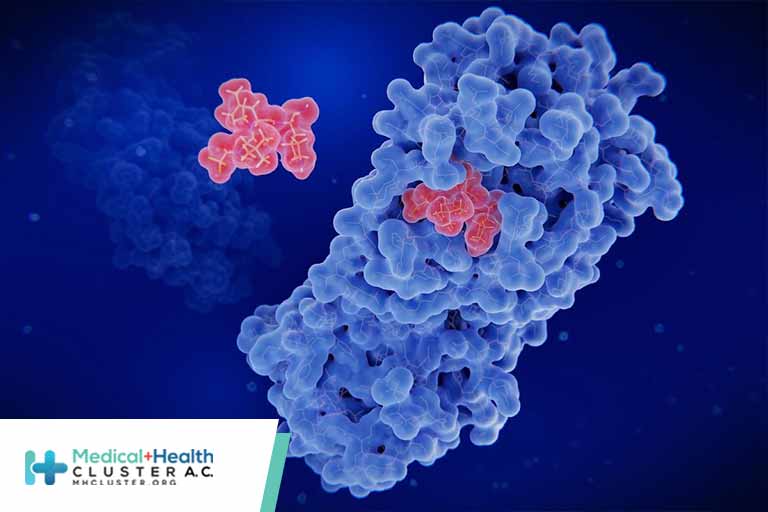OBJECTIVES, PATIENTS, AND OVERSIGHT
This phase 2–3, double-blind, randomized, placebo-controlled trial evaluated the efficacy, viral load, and safety associated with the use of nirmatrelvir plus ritonavir among nonhospitalized, symptomatic adults with Covid-19 who were at high risk for progression to severe disease. Eligible patients were required to be at least 18 years old; to have confirmed SARS-CoV-2 infection and symptom onset no more than 5 days before randomization, with at least one sign or symptom of Covid-19 on the day of randomization (see Table S1 in the Supplementary Appendix, available with the full text of this article at NEJM.org); and to have at least one characteristic or coexisting condition associated with high risk of progression to severe Covid-19.2-4,6 The trial was approved by an ethics committee at each site, and all participants provided written informed consent.
Key exclusion criteria were previous confirmed SARS-CoV-2 infection or hospitalization for Covid-19, anticipated need for hospitalization within 48 hours after randomization, and prior receipt of convalescent Covid-19 plasma or SARS-CoV-2 vaccine. The Supplementary Appendix provides additional inclusion and exclusion criteria and information on prohibited prior or concomitant therapies, trial blinding, ethical conduct, and responsibilities of the sponsor. All the data were available to all the authors, who vouch for the accuracy and completeness of the data as well as the adherence of the trial to the protocol, which is available at NEJM.org and includes the statistical analysis plan.
PROCEDURES
Eligible patients were randomly assigned in a 1:1 ratio, by means of an interactive response technology system, to receive either nirmatrelvir plus ritonavir or matched placebo every 12 hours for 5 days (10 doses total). Randomization was stratified by geographic region and by receipt or expected receipt (based on investigator opinion) of Covid-19 monoclonal antibodies. Nirmatrelvir and matching placebo were manufactured by Pfizer, ritonavir tablets were manufactured and tested by Hetero Labs, and blinding of the tablets was performed by Pfizer through over-encapsulation. The assessment schedule is outlined in Figure S1.
EFFICACY
The primary objective of the trial was to assess the efficacy of nirmatrelvir plus ritonavir as compared with placebo by comparing the percentage of patients with Covid-19–related hospitalization or death from any cause through day 28 in the two groups. This comparison was performed in the modified intention-to-treat population, which included patients whose treatment began within 3 days after the onset of Covid-19 signs and symptoms and excluded patients who at randomization had received or were expected to receive monoclonal antibody treatment (see Table S2 for definitions of all analysis populations). A key secondary end point was the primary comparison analyzed similarly among patients whose treatment began within 5 days after the onset of Covid-19 signs and symptoms. A supplementary analysis was conducted to include patients who had received or were expected to receive monoclonal antibody treatment. Prespecified subgroup analyses of primary and secondary end points were conducted, and nominal 95% confidence intervals were provided to evaluate whether the treatment effect varied according to age, sex, race, body-mass index (BMI, the weight in kilograms divided by the square of the height in meters), baseline serology status and viral load, and number of baseline coexisting conditions and risk factors (see the Supplementary Appendix for details on the serology methods).
VIRAL LOAD
Detection and quantification of SARS-CoV-2 viral load in nasopharyngeal swabs by reverse-transcriptase–polymerase-chain-reaction assay was a secondary end point. Nasopharyngeal or nasal swabs were collected on day 1 (baseline) and days 3, 5, 10, and 14.
SAFETY
Safety end points included adverse events that emerged during or after the treatment period (starting on or before day 34), serious adverse events, and adverse events leading to discontinuation of the trial drug or placebo, as coded according to the Medical Dictionary for Regulatory Activities (MedDRA), version 24.0. Incidence data were provided for each treatment group within the safety analysis population, which included all patients who received at least one dose of drug or placebo. Investigators actively collected safety information through day 34.
STATISTICAL ANALYSIS
The trial planned to enroll approximately 3000 patients. Of these, 1717 were to be included in the primary analysis to ensure 90% power, accounting for an interim analysis, to detect a 50% difference in Covid-19–related hospitalization or death from any cause with nirmatrelvir plus ritonavir, as compared with placebo (anticipated event rate with placebo, 7.0%)11 in patients who had undergone randomization within 3 days after symptom onset and who received no monoclonal antibodies.
The primary analysis compared proportions of patients in the two groups who were hospitalized for Covid-19 or died from any cause through day 28, using the Kaplan–Meier method to account for all patients, including those prematurely withdrawn from the trial or lost to follow-up. A z-test was used for the comparison, with standard errors estimated from Greenwood’s formula. The end points were tested sequentially (i.e., first the primary end point, then the first key secondary end point, and finally other secondary end points) to ensure the overall alpha level of 0.05.
Changes from baseline to day 5 in log10-transformed viral load were compared between treatment groups with an analysis of covariance (ANCOVA) model adjusted for baseline viral load and serology status. Patients without detectable virus at baseline were excluded from the analysis. Viral loads below the limit of detection (2 log10 copies per milliliter) were imputed as 1.70 log10 copies per milliliter.
On the basis of a group sequential design utilizing a Lan–DeMets alpha-spending function with an O’Brien–Fleming stopping boundary,18,19 a prespecified interim analysis of the primary end point for efficacy, futility, and sample size re-estimation was performed by an external data monitoring committee once approximately 45% of patients in the primary analysis population had completed assessments through day 28. The prespecified significance level for early termination was 0.002 for efficacy and 0.9184 for futility. See the Supplementary Appendix for additional details regarding the statistical analyses, including handling of missing data.
https://www.nejm.org/doi/full/10.1056/NEJMoa2118542?fbclid=IwAR0MoibK59fsFIUlM6jiDNdpNRsHoq91eyJU9SZQyNcBr9PhwF-_WY9Sfjg
Créditos: Comité científico Covid





